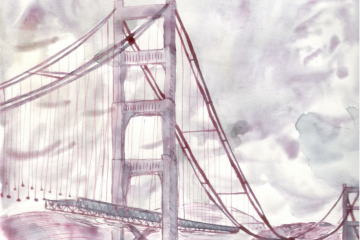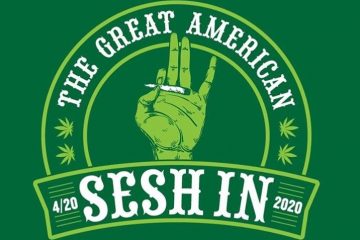How the Trump Tax Plan is Going to Gentrify the Bay Area
This originally appeared in my Broke-Ass City column in the SF Examiner
With tax season just past us there’s been a lot of talk about what President Donald Trump’s tax scam means for average Americans. There’s no doubt about what it means for the wealthy; millionaires and billionaires are getting a big tax break, while companies like Amazon and Netflix are paying $0 in federal taxes.
And as I discussed a few weeks ago in my column, many working people are getting far less in tax returns than they usually do. But one part of Trump’s tax plan that’s been grossly overlooked are the “Opportunity Zones” it’s creating in cities across the country.
On the surface, the idea behind these Opportunity Zones that were part of Trump’s plan, passed in December 2017 is that, by giving tax breaks to investors, they will be encouraged to put their money into communities that still haven’t fully recovered from the Great Recession. (The law allows states to designate up to 25 percent of their low income neighborhoods to quality for these incentives). But in reality, this will create a gentrification juggernaut that could possibly ruin pockets of cities which are already experiencing gentrification like areas in neighboring Oakland. And it will make the rich far richer.
To understand how the Opportunity Zones work, you have to understand how capital gains taxes work. Capital gains are profits from things like selling investment property, stocks, art, and other wealthy people stuff. They are typically at about 24 percent, and while they are in some cases lower than the tax rates you and I pay on our incomes, the new program allows investors to avoid paying that tax by putting their profits directly into an Opportunity Zone fund. They can then use this money to develop something in a neighborhood that is designated as Opportunity Zone. An investor who holds onto the investment for seven years gets another 15 percent tax break on the original capital gains. Plus, and here’s the real kicker, they would owe zero taxes on any profits if they keep the investment for at least 10 years.
These Opportunity Zones are essentially creating tax havens for the one percent right in the centers of our cities.
Right now there are about 8,700 “Opportunity Zones” across all 50 states, plus DC and Puerto Rico. While this might have the potential to do good things in Rust Belt cities where the economy is stagnant, it has crushing possibilities for places that are already on the upswing.
A website called Fundrise, which touts itself as “The first simple, low-cost real estate investment platform” has an article titled the “Top 10 Opportunity Zones in the US” and can you guess what city holds down the number one spot? If you said “Oakland” you won…well probably a future eviction. The Oakland neighborhoods of West Oakland, Uptown, Jingletown, and Coliseum Industrial are the top Opportunity Zones in the country. The rest of the top 10 list are neighborhoods in cities like Los Angeles, San Jose, San Diego, Seattle, Portland, and more.
Are you starting to see how this is a major problem? The neighborhoods in Opportunity Zones in these cities are already on their way to being developed. Often the only thing holding them back are neighborhood activists working with local governments to make it harder for vultures and speculators to get in there.
In San Francisco, we’ve witnessed what happens when these kinds of investors get their way. As we saw with Mayor Ed Lee’s Twitter Tax break, these kinds of tax giveaways, in areas that are already having financial success, do nothing to help the people that are already living there. They end up making lots of money for a very small group of elites who profit off regular working people losing their homes and communities.
If there’s one thing the past decade in the Bay Area has shown us it’s that hedge funds, venture capital firms, investment banks, money managers, and market-rate real estate developers don’t care about anyone other than their investors and their share holders. And these disgusting vultures are lining up to prey on our cities.
According to the New York Times over 80 “Opportunity Funds” have been started since January, and they are raising tens of billions of dollars to dump into these communities.
As expected, most of the funds have focused on real estate investment. There is a tiny ray of hope though. In the same article the New York Times, discusses a small group of impact investors trying to figure out how to use Opportunity Zones the right way. They are focusing on places that actually need the financial help, as well as trying to set up accountability standards like financing local businesses and creating good jobs, instead of funding luxury condos. At the moment the Federal Government has no standards as to what the development of these Opportunity Zones look like.
Hopefully these impact investors succeed because otherwise there’ll be no regular people left in our cities.
Shout out to my buddy Jordan Miller for hipping me to this travesty.










